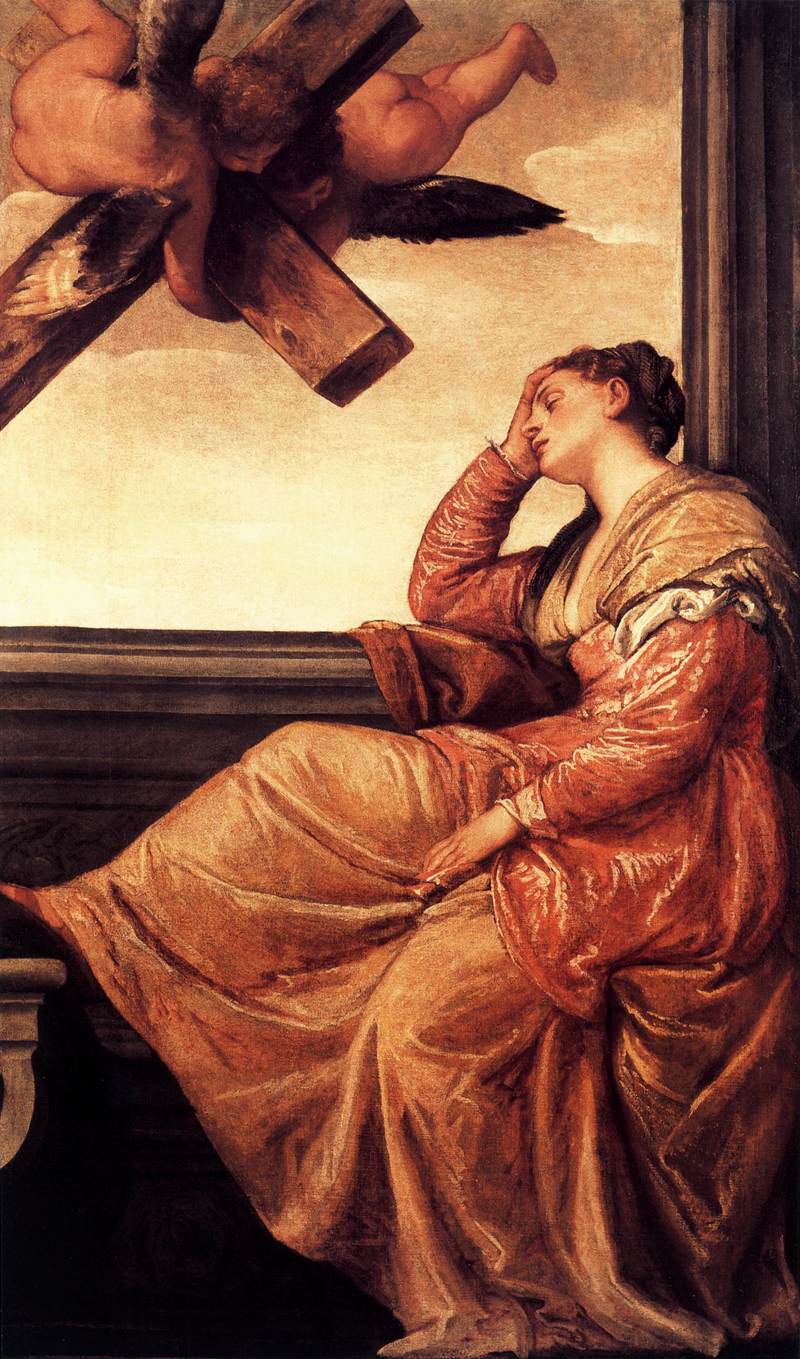2012 (286)
2013 (161)
2019 (2)


Paolo Veronese: 'The Dream of Saint Helena', about 1570
The empress Saint Helena, the mother of the Roman Emperor Constantine, is about to set out on a great journey inspired by a vision.
In this painting she looks quite unprepared for the apparent delivery of a wooden cross winging its way to her. She rests comfortably, nestled beside a stone window ledge with the pink-gold folds of her heavy drapery gathering by her hand.
The two small angels, with flushed faces from the struggle with their weighty load, appear in Saint Helena’s dream. Their arrival in this now foreboding-looking sky (which was originally much bluer) marks only the start of Saint Helena’s journey to seek what the angels have revealed to her.
( National Gallery of London)
************
Paolo Veronese, from whom I have never heard before in my life, next to Titian and Tintoretto, constitute the triumvirate of Venetian art masters of the renaissance.
Like all the other painters, he showed very early an admirable talent for painting and, with 14 years, he was already an apprentice of local masters in his hometown, Verona. Although he was educated in the mannerist way, Veronese soon followed his own path.
The vision of St. Helena is a work that belongs to his mature stage and portraits the mother of Constantine I, emperor of Rome. Raised in a humble home, St. Helena is later canonized for her pious works and her relentless search for christian relics. Legend says that, slept, dreams with a place where can be found the original cross where Jesus was crucified on and, after that, she began her quest.
There are two versions of the painting: the first from 1565 and the other one we have today, from 1580. The concept for both is the same, although the treatment of the motif is different.
In the 1580 version, we see Helena sleeping, wearing 16th century clothes (note: Helena lived from 250 to 330 a.c.), with a cloth and a veil, secured by her crown. He rests over her left hand in a position that, to my understanding, is far from comfortable. To the right of the canvas, symbolically, a winged angel, with his back to us, shows her the cross.
The motif of the work can be interesting, but it is undeniable that the technique of this artist is from another world. In todayâ




